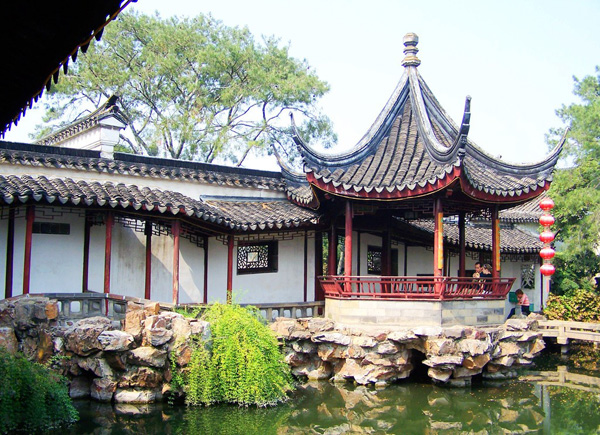Master Of Nets Garden
One of the four most famous gardens in Suzhou, the Master of Nets Garden is one of the finest traditional Chinese gardens in all of China. The garden beautifully blends architecture, rockeries, plants, and water features to mimic nature in miniature. There are so many tricks used to trick and draw the eye, that most visitors are not even aware of it.
The Master of Nets Garden was first built in 1140, during the Southern Song Dynasty (1127-1279), by Shi Zhengzhi, a government official who was tired of political life and dreamed of the quiet and solitary life of fishermen depicted in poems. The garden was owned by many people, until it was left to decay, until 1785, during the Qing Dynasty (1644-1911), when Song Zongyuan, a retired government official, bought and restored the garden. He changed a great deal of the garden and rebuilt or changed virtually all the buildings. In 1795, Qu Yuancun bought the garden. He added and remodeled the existing buildings, planted many trees and built rockeries. During the Taiping Rebellion, in the 1860’s, sections of the garden were destroyed. Then in 1868 Li Hongyi, a government official and calligrapher acquired the garden and he restored the garden. A large amount of the calligraphy on the steles was painted by him and carved in stone. He Chang, in 1940 He restored the garden and wrote in his will that the garden should be donated to the country upon his death. In 1958, his daughter followed his wishes and gave the garden to Suzhou.
The Master of Nets Garden occupies an area of 5,400 square meters and is divided into two sections; the eastern and western sections, with the western section being split into two main areas. The eastern section is the residential area where the owners of the garden lived. The western section is where the gardens are located. The residential area consists of four halls with three courtyards and one tower. They are arranged in a linear fashion, as is traditional in Chinese residential architecture. The western section’s gardens are very classical. The garden area is split into the central garden and inner garden. The central garden was where social activities were done. This section has a large pond surrounded by buildings and paths. The buildings were built on stone foundations which set out over the water making the pond look larger than it is and although there is quite a few buildings, their design and layout make the area look spacious. The Inner garden was used for intellectual pursuits.
The designers of the garden created it so that your eyes are constantly drawn to certain points. Each window was placed so that it look over a particular stone, tree, or section of the garden. Every building in the garden was designed so that the main garden could be accessed from any room. Visitors never know what to expect with every turn of a path, or view from a building. It was designed this way and it is what makes Chinese traditional gardens so special.




